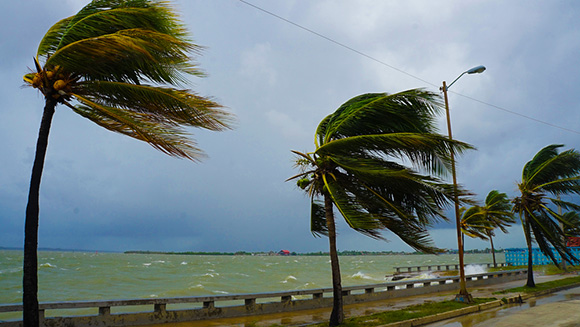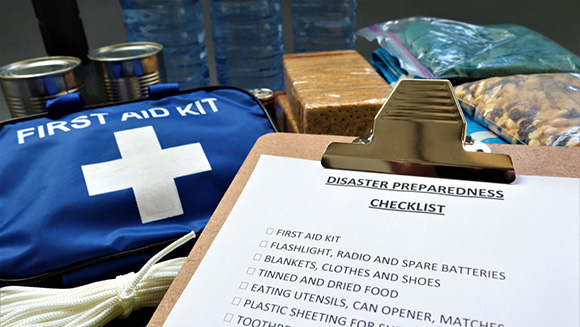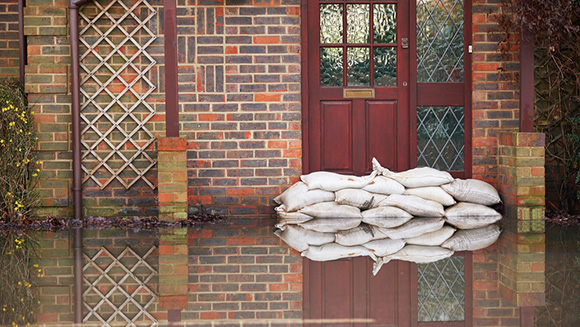It’s not a stretch to say the weather this year has been out of the ordinary – and now California is being told to prepare for a hurricane. Are you prepared?

As Hurricane Hilary’s progression continues to be monitored, those who live in Southern California are being advised to prepare for rainfall and flooding. While this can feel scary and stressful, especially for a state that doesn’t deal with these warnings often, proper preparation can reduce the stress and chaos that can come with these situations. Read on to learn the Top 5 ways to prepare for a flood according to ready.gov’s guidelines!
On Campus During an Emergency? Tips from Coastline Public Safety
1. Monitor emergency alerts and warnings
- Ensure Wireless Emergency Alerts are enabled on your phone to receive emergency messages from public authorities. Search and sign up to receive emergency alerts specific to your county or area and keep up with weather forecasts through NOAA Weather Radio. Additionally, The Federal Emergency Management Agency (FEMA) App sends out real-time weather updates and helps to find shelters in case of evacuation.
- If there are children in your household, search and sign up for their school’s emergency alert system to receive updates and be aware of the school’s emergency plan.

2. Prepare an emergency kit
- An emergency kit is a collection of everyday household items that will last at least three days. A few items recommended to stock up on are water, non-perishable food, a first aid kit, and backup chargers and batteries.
- Items specific to you and your household such as important documents, prescription and non-prescription medication, pet food, clothing, and hygiene products should also be included.
- Store the items in airtight plastic bags and place the entire kit in easily transportable water-proof containers.
3. Evacuation plan
- An evacuation plan should include how and where you will escape if an evacuation order is given. When creating your plan, consider identifying exit routes in your home, keeping your car with a full tank of gas, mapping out alternative roadway routes, and making shelter arrangements for your household and any pets ahead of time.
- Learn the types of flooding you can be impacted by, and search for a flood map of your area using FEMA’s Flood Zone Map Service Center to determine the risk of flooding.
Calm in a Crisis? Explore Emergency Management @ Coastline
4. Family Emergency Communication Plan
- In case your household isn’t together when an emergency warning or alert is sent out, make sure everyone has a paper copy of emergency numbers and the contact information of close friends and family in addition to their phones if there’s a power outage.
- Identify places everyone in your household is familiar with to meet up or reunite if an evacuation is ordered.
- Due to texts requiring less bandwidth, it's encouraged to text rather than call to ensure your message gets through.

5. Prevent damage to your home
- Locate high-level areas in your home where you can place furniture or any belongings you wouldn’t be able to take with you if you were to evacuate.
- Consider buying sandbags to help slow/stop floodwaters from invading your home.
- Take the time to learn how the gas and electricity controls in your home operate if they need to be turned off due to flooding.
- Purchase flood insurance to cover any damage done.
While here in California we may be a bit baffled to be preparing for a hurricane, we’re still not strangers to flash flood warnings when hit with significant rain. Whether you’re currently here in California prepping for Hilary, live elsewhere in the country that is more familiar with heavy storms or hurricanes, or find yourself in another situation needing to prepare for potential floods, we hope these tips will help you stay calm and prepared in unfortunate circumstances. Also, be sure to check out ready.gov for additional resources, and remember you can also follow your city and/or county's municipal and emergency services social media accounts for local alerts and announcements. Stay safe!
Apply to Coastline


